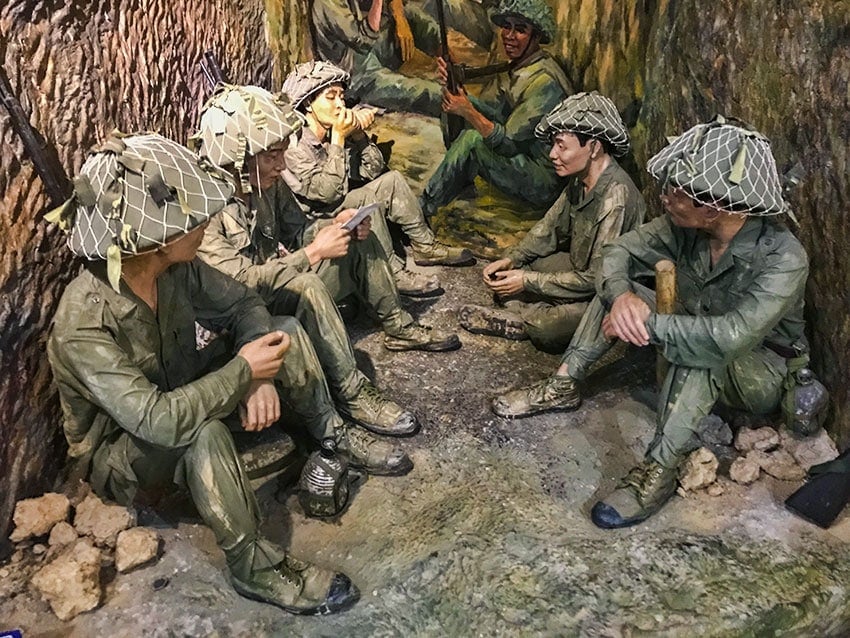A Day in Điện Biên Phủ
Điện Biên Phủ is famous for the important battle that was fought here between the Việt Minh and the French colonial troops. The victory of the Việt Minh ended major French involvement in Indochina and led to the partition of Vietnam into North and South.

Vietnam Military History Museum

The museum is housed in this interesting looking building. The entrance reminds one on the trenches of the Hill A1 opposite of the museum.
If you ever visit the place it is good to read up on the battle and why the French even put a base here. All the information in the museum is in Vietnamese only so you will not really know more after you visit it.


Indochina was a French colony until the beginning of the Second World War. With the defeat of 1940 and the strengthening of the Axis powers, the colony came under Japan’s sphere of influence. This influence weakened the French position of power so much that the Việt Minh could form as a political and military mass movement with the goal of national independence as the strongest political force.
Since
Operation Castor
The French military leadership wanted to give the war a decisive turnaround by destroying the Việt-Minh troops. To achieve this, the guerrilla units were to be lured into an open battle. To this end, an air-supplied outpost was to be set up in northwestern Tonking to attract the attacks of the Việt Minh. They decided on Điện Biên Phủ because they wanted to stop the Chinese supply going to the Việt Minh.
The French were sure that the Việt Minh was not able to get heavy artillery over the mountains, and if so only a few canons and not enough ammunition. This proved to be very wrong and let to losing the later battle.













Eliane 2 or the A1 Hill







War cementry














